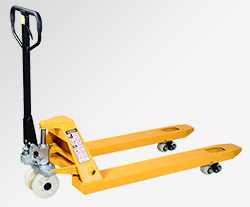News Details
What are the components that need maintenance and repair for manual hydraulic transport vehicles
A certain customer purchased a manual hydraulic handling vehicle produced by our factory and consulted our technical personnel about maintenance and repair matters in order to improve its service life and save procurement costs. Below, we will introduce the warranty and maintenance matters for the handling vehicle.

1、 Daily maintenance work that must be done
1. Keep going
Check the oil level once a month. Suggest using hydraulic oil: 32 # hydraulic oil.
2. Exhaust gas
Due to transportation or inversion of the pump body, air is likely to enter the hydraulic pump, which will cause the cargo pressure to not rise when pressurized in the rising position. You can exhaust the air by pulling the handle to the descending position and reciprocating it up and down several times.
3. Daily inspection and maintenance
Daily maintenance is essential, with a focus on repairing wheels, core axes, and rags. After the transportation is completed, the items on the fork should be unloaded and the fork frame should be lowered to the lowest position.
4. Apply lubricating oil
In use, all bearings and shafts have been lubricated with long-life oil. You only need to add lubricating oil to all moving parts at monthly intervals or during thorough inspections.
2、 Three major components that require key maintenance and repair
(1) Bracket and fasteners: Tighten the loose axle and nut, and check whether the weld or support plate is damaged. The plug-in type casters should be tightened with nuts or firmly riveted to ensure that the equipment installation bracket is not bent. When installing casters, lock nuts or anti loosening washers should be used.
(2) Lubrication: Regularly add lubricating oil. Apply lubricating grease to the friction parts of the wheel axle, sealing ring, and roller bearing. To reduce friction and make rotation more flexible.
(3) Wheels: visually inspect the wear of the wheels. Check that the wheels are rotating normally, without any debris or loose or tight wheels. Replace damaged casters to avoid unstable rotation. After inspecting and replacing the casters, it is necessary to ensure that the wheel axle is tightened with locking washers and nuts (as loose wheel axles can cause friction and jamming between the wheel rim and the bracket).
Damaged manual hydraulic transport vehicles must be repaired or scrapped, and it is prohibited for transport vehicles to work with defects.

